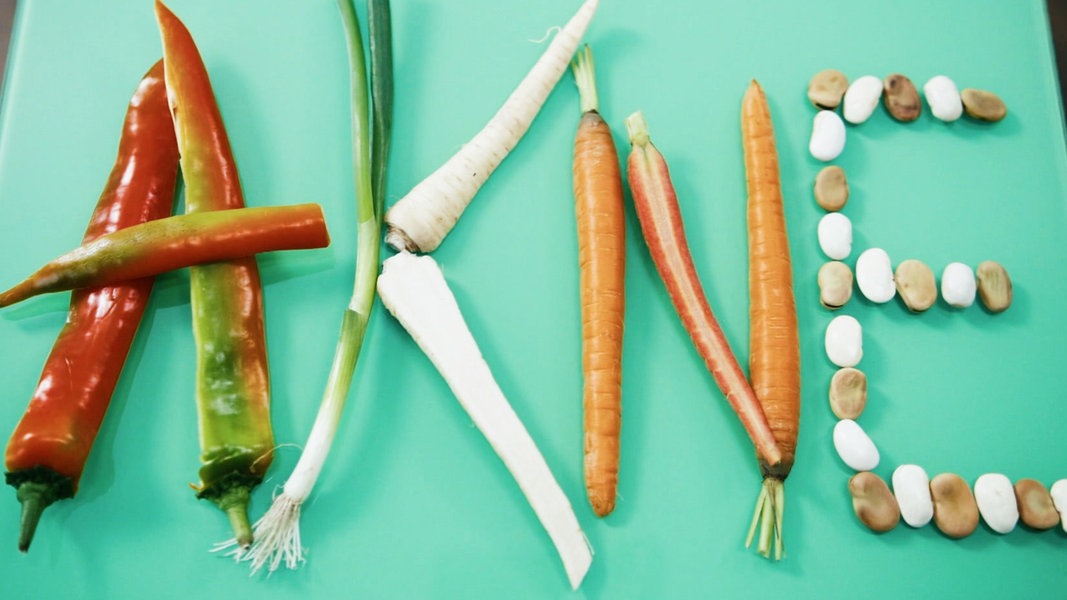




Status: 04.03.2024 10:00 a.m.
Hormones and inflammatory processes are responsible for acne – that’s why you should eat less sugar, white flour products and meat and instead eat more anti-inflammatory and gut-healthy foods.
An anti-inflammatory diet can help to reduce skin inflammation: lots of vegetables, some low-sugar fruit, high-quality vegetable oils, little meat, and occasionally fish. In particular, the intake of anti-inflammatory omega-3 fatty acids has shown Study shows a positive effect on the skin. Omega-3 fatty acids are found in linseed oil, nuts, seeds and fatty sea fish such as salmon, herring or mackerel.
A healthy intestinal microbiome also counteracts inflammation. With the help of fiber, Pre- and probiotics can build up a healthy intestinal flora and reduce acne breakouts.
Quickly absorbed carbohydrates (sugar, sweets, white flour products), which lead to a rapid increase in blood sugar, as well as highly processed foods and pork, should be avoided.
Eliminating milk, sugar and other “triggers” can be helpful
Certain foods are suspected of worsening the condition of the skin in acne. Cow’s milk (products) and sugar in particular can sometimes promote the secretion of substances that stimulate the sebaceous glands. The best way to determine which foods have an adverse effect on the skin is to follow an elimination diet: to do this, leave out possible triggers – such as cow’s milk – for several months and then reintroduce them one by one, keeping a food and symptom diary.
Diet for acne – the most important tips
- Anti-inflammatory diet: Omega-3 fatty acids from high-quality linseed or hemp oil with cold dishes and salads as well as fish containing omega-3 such as salmon, herring or mackerel (twice a week); Spices such as oregano, turmeric, ginger, cinnamon (but not too much spicy, no mixed spices), lots of Vegetables (3 handfuls daily), Fruit in moderation (1 handful is enough).
- Few Meat – if possible, poultry is preferable. Avoid pork: it contains a lot of inflammatory arachidonic acid.
- Sugar and white flour products are considered to be inflammatory – please limitincluding hidden sugars from processed foods!
- Cow’s milk and cow’s milk products are suspected of making acne worse. It is therefore best to avoid them completely for 3-4 months. If there is no significant improvement, the cow’s milk diet can be relaxed.
- Aim for a normal weightbecause excess belly fat fuels inflammation.
- Take breaks of several hours between meals, Avoid snacks. Emergency snacks: nuts, nibbles or a low-sugar smoothie (e.g. with dandelion, cucumber, blueberries/blackberries and leaves of beetroot, kohlrabi or carrots).
- Eat a varied dietso that you are supplied with all the important nutrients. If you avoid cow’s milk (products) calcium through calcium-rich mineral water and vegetables such as broccoli and fennel.
- The skin often reflects the Intestinal and liver health For a For a healthy gut, make sure you get enough fiber (vegetables, whole grains), include prebiotics (e.g. in chicory, Jerusalem artichoke, onions, garlic, salsify) and probiotics (from fermented vegetables such as sauerkraut (juice) or kombucha) in your diet. To stimulate liver function: bitter substances (e.g. rocket, chicory).
- Avoid coffee and alcohol – stimulate blood circulation, which encourages the formation of pimples. Recommended drinks are nettle and dandelion tea, which stimulate excretion via the kidneys.
What to eat for acne: foods and recipes
Eating to improve the condition of your skin: Here you will find suitable recipes and food lists (also for download).
Further information
Further information










